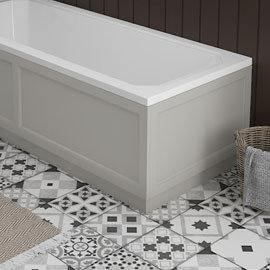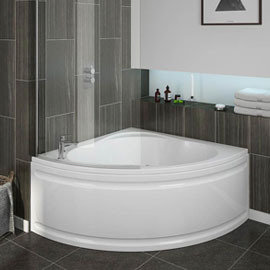UP TO 60% OFF SPRING SALE!
Free Delivery on Orders Over £499**
Shower Baths Buying Guide
Shower Baths Buying Guide
Everything You Need To Know Before Buying A Shower Bath
- Shower Trays
- - Rectangular Shower Trays
- - Quadrant Shower Trays
- - Square Shower Trays
- - Offset Quadrant Shower Trays
- - Pentagonal Shower Trays
- - Slate Effect Shower Trays
- - Walk In Shower Trays
- Shower Cabins
- Quadrant Shower Enclosures
- Square Shower Enclosures
- Rectangular Shower Enclosures
- Frameless Shower Enclosures
- Offset Quadrant Shower Enclosures
- Shower Side Panels
- Shower Doors
Shower baths are an ideal way to inject both a level of style and practicality into your bathroom as modern living often means that a shower is the more functional choice these days, but with these items you still get to relax and bathe in a luxurious tub at the weekend! In this guide we'll be outlining why a shower bath could be right for you, and what you need to pay attention to if you are considering buying one.
What are the benefits of shower baths?
Available in left or right hand options, shower baths feature a conventional tub, which is wider at one end to accommodate a shower. A screen is fitted to this end to prevent water from splashing onto the floor.
The main advantage this kind of bath has is that it combines two elements together, which gives you more options and also allows you to save space in the bathroom. Most people don't have the room for separate bath and shower areas, so these designs are very practical solutions.
They will usually be either P or L shaped for convenience (the wider end providing an ideal space for you to shower), and are an ideal option for families who don't have much room as they allow everyone to get what they need from a bathroom without having to have the cramped feel that having separate bath and shower areas can sometimes create.
What are P and L shaped baths?
Shower baths will come in either a P or L shape. One end of the bathtub will feature wider dimensions, which are either squared (L) or rounded (P) shaped. This will also dictate which bath screens you can use, as L shaped baths will need straight screens while P shaped examples will require curved ones. You can get bath screens which will fold into numerous sections too for a more practical touch.
Left-handed or right-handed?
Many of our corner baths and shower baths will be described as having either `left-handed' or `right-handed' orientation. It's crucial that you choose the correct orientation to suit your bathroom, otherwise, your entire space could need a reshuffle in order to fit it!
If, when looking at the bath straight on, you require the wider showering area to be situated on the left, you'll need a left-handed bathtub. Likewise, if you require the wider showering area to be situated to the right, you'll need a right-handed bathtub.
Tips for installation
When it comes to installing your new shower bath, it may be best to leave it to the professionals if you're not overly confident in your own abilities.
However, if you feel that you are capable of fitting it yourself, these helpful tips may come in handy along the way.
-
Always make sure the water is turned off before undertaking any serious plumbing work.
-
Install the pipework prior to the bathtub itself.
-
Ensure the hot and cold water lines and waste are all aligned correctly to the bath.
-
Run the pipe leading to the showerhead up the wall ensuring all the necessary nuts and bolts are properly secured and the pipe itself is not loose or ill fitting in any way.
-
Silicone caulk should be applied to areas where the bathtub meets the wall in order to get a tight, safe fitment.
-
PTFE tape should be applied to shower pipe threads in order to prevent leaks.
-
Finally the water should be turned back on and allowed to run for a couple of minutes to allow you to check for leaks.
What about a waste?
When it comes to choosing a waste which is suitable for your shower bath, either a click clack or pop up option will be ideal for modern bathrooms, while a plug and chain waste may be more appropriate for traditional settings. Always double check the dimensions of items like this before buying, and make sure that the type of waste you buy will actually be able to work with the bath that you have to avoid any problems further down the line.



